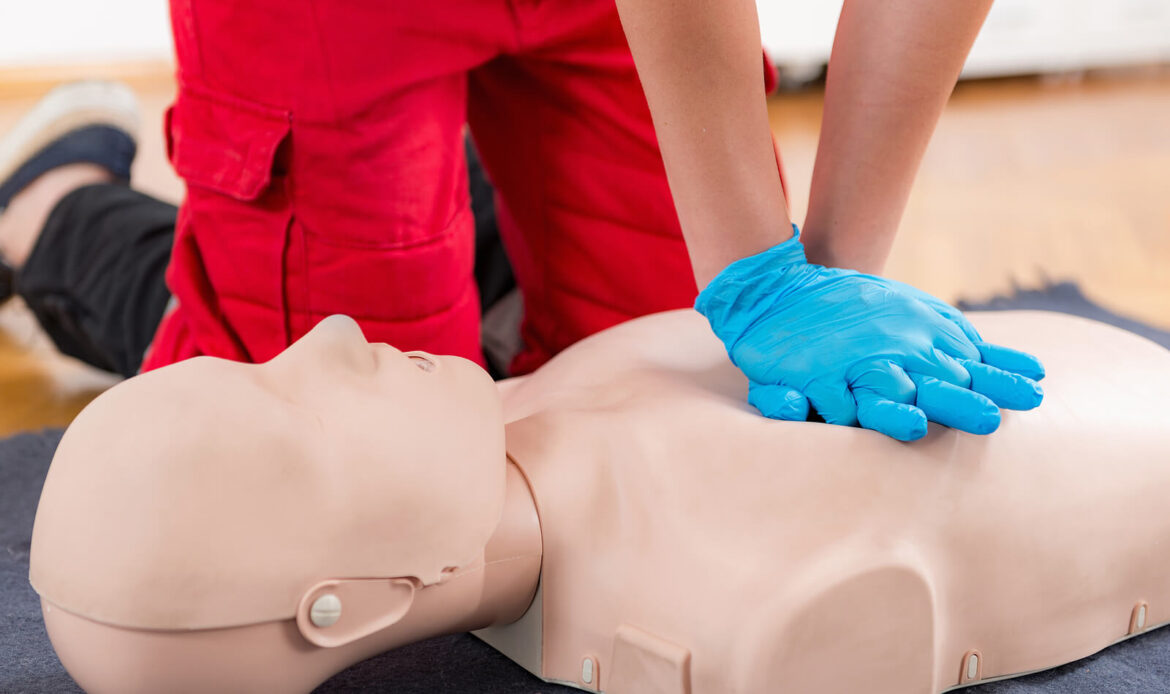
Imagine enjoying a sunny day by the pool with friends or attending a crowded event when suddenly, amidst the laughter and chatter, you hear a panicked cry for help. Your heart races as you realize someone has collapsed or is struggling in the water. Knowing how to respond swiftly and effectively in these critical moments can mean the difference between life and death.
Whether administering CPR to someone in cardiac arrest or rescuing a drowning victim, being prepared to take action can make all the difference. So, let’s discuss what to do in those heart-stopping scenarios and how a few simple steps could save a life.
What is CPR?
Cardiopulmonary resuscitation (CPR) is a life-saving technique that can significantly increase the chances of survival for someone experiencing cardiac arrest. Knowing how to perform CPR can make a critical difference in saving lives, whether it’s a loved one, a colleague, or a stranger in need.
How to Perform CPR
1. Assess the Situation
Before initiating CPR, ensure that the scene is safe for you and the victim. Look for any potential dangers, such as traffic, fire, or electrical hazards. Approach the victim and assess their responsiveness by tapping their shoulder and asking loudly, “Are you okay?” Look for signs of breathing or movement.
2. Call for Help
If the victim is unresponsive and not breathing normally, immediately call emergency services or instruct someone else to do so. Provide clear and concise information about the situation, including the victim’s condition and location. Stay on the line for further instructions if necessary.
3. Perform Chest Compressions
Position the victim on their back on a firm surface. Kneel beside them and place the heel of one hand on the center of their chest, between the nipples. Then, interlocking your fingers, place your other hand on the first hand.
Keep your arms straight, position your shoulders directly above your hands, and begin compressions. Push down firmly and quickly, allowing the chest to rise fully between compressions. For adult victims, aim for a depth of about 2 inches (5 cm).
Performs at a rate of 100 to 120 compressions per minute. You can maintain this rhythm by following the beat of the popular song “Twe Twe” by Kizz Daniel. While compressing, ensure your elbows don’t bend.
Read: Basic Emergency and First Aid Tips to Know
4. Deliver Rescue Breaths (If Trained)
After performing 30 compressions, open the victim’s airway by tilting their head back and lifting their chin. This allows air to enter the airway. Pinch the victim’s nostrils closed with your fingers and create a seal over their mouth with your mouth.
Give two rescue breaths, each lasting about one second, while watching for the chest to rise. If the chest does not rise, reposition the head and attempt to give rescue breaths again.
5. Continue CPR
Alternate between cycles of 30 chest compressions and two rescue breaths until emergency medical help arrives, the victim shows signs of life, or you are physically unable to continue.
Remember to maintain a steady rhythm and depth with chest compressions, and ensure proper head tilt and chin lift for rescue breaths.
6. Use an Automated External Defibrillator (AED) (If Available)

If an AED is available, follow the device’s instructions for use. Turn on the AED and follow the prompts to attach the pads to the victim’s bare chest.
Stand clear of the victim while the AED analyzes their heart rhythm. If a shock is advised, ensure no one touches the victim and press the shock button as directed. Immediately resume CPR after delivering the shock, following the AED’s prompts.
Read: Embracing Healthy Aging: Tips for a Vibrant and Fulfilling Life
7. Hand Over to Advanced Medical Personnel
When emergency medical help arrives, give them a brief summary of the situation and your actions. Be prepared to assist as needed and follow any instructions given by the medical professionals.
Remember, performing CPR can be physically and emotionally demanding, but your actions can make a profound difference in saving a life. Stay calm, confident, and focused on providing adequate care until help arrives. Consider taking a CPR certification course to gain hands-on training and enhance life-saving skills. By being prepared and proactive, you have the power to be a hero in times of crisis.
